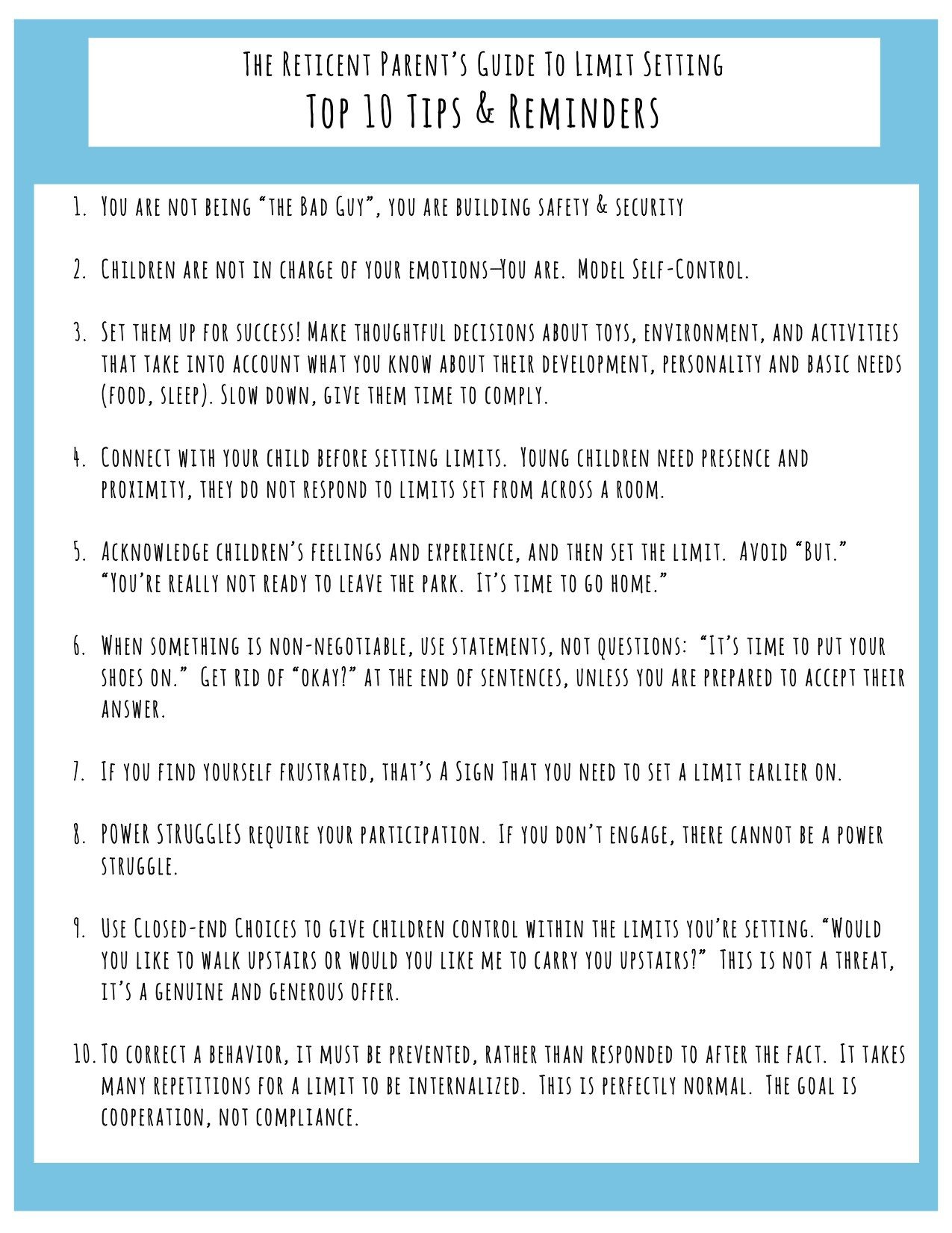Navigating the complexities of modern parenting involves understanding and addressing the unique challenges women face when setting limits and establishing boundaries. CONDUCT.EDU.VN offers insights into effective parenting strategies that foster secure and well-adjusted children, providing resources to help parents confidently guide their children’s development. Explore the importance of kindness and respect in nurturing children to help them become responsible individuals.
1. Understanding the Nuances of Limit Setting
1.1. The Challenge of Limit Setting
Limit setting is a crucial aspect of parenting, providing children with a sense of security and structure. However, many parents, particularly mothers, struggle with this task due to various emotional and societal factors. Understanding these challenges is the first step toward effective limit setting.
1.2. Societal Expectations and Gender Roles
Women are often socialized to be nurturing, empathetic, and accommodating, which can make it difficult to enforce boundaries. Societal expectations can create internal conflict, leading to feelings of guilt or anxiety when setting limits.
1.3. Emotional Barriers to Limit Setting
Many parents struggle with limit setting because they fear their children’s negative reactions. The desire to avoid conflict and maintain a harmonious relationship can lead to inconsistent or nonexistent boundaries.
2. Reframing Limit Setting as an Act of Love and Respect
2.1. The Importance of Boundaries for Children’s Security
Children feel safe and secure when they know their caregivers are in control and can provide guidance. Clear boundaries help children understand expectations and navigate their environment with confidence.
2.2. Janet Gonzalez-Mena’s Analogy of the Guardrail Bridge
Janet Gonzalez-Mena, a respected figure in early childhood education, uses the analogy of a guardrail bridge to illustrate the importance of limits. Without guardrails, crossing a bridge in the dark can be frightening. Similarly, children need boundaries to feel secure and relaxed.
2.3. Limit Setting as a Gift, Not a Burden
Reframing limit setting as an act of love and respect can transform the parenting experience. By viewing boundaries as a way to provide security and guidance, parents can approach limit setting with greater confidence and compassion.
3. Addressing Common Obstacles to Effective Limit Setting
3.1. Fear of Rejection
One of the biggest obstacles to limit setting is the fear of rejection. Parents worry that setting boundaries will make their children angry or resentful.
3.2. Understanding Children’s Emotional Responses
It’s important to understand that children’s emotional responses are normal and healthy. Allowing children to express their feelings, even anger, is crucial for their emotional development.
3.3. The Message of Power Imbalance
When parents allow their children’s emotions to dictate their actions, they inadvertently give children too much power. This can create insecurity and anxiety in children, as they may feel responsible for managing their parents’ emotions.
3.4. Being a Rock for Your Children
Children need their parents to be a stable and reliable presence. This means being able to withstand their children’s emotional outbursts without wavering or giving in.
3.5. Overwhelmed by Prolonged Emotional Expressions
Children’s emotions can sometimes be overwhelming, especially when they persist for an extended period. It’s important to remember that children’s emotions take as long as they take and that the best approach is to offer acknowledgement, empathy, and calm presence.
3.6. Acknowledgment, Empathy, and Calm Presence
These are the key tools for helping children process their emotions. Acknowledging their feelings, showing empathy, and remaining calm can help children feel understood and supported.
3.7. Respecting Tantrums as Expressions of Overload
Tantrums are often the result of emotional and neurological overload. It’s important to approach tantrums with respect and compassion, rather than punishment or attempts to suppress the child’s emotions.
3.8. Managing Tantrums with Self-Care and Compassion
If the screaming becomes too much, it’s okay to take a break. Ensure the child is in a safe space, explain that you need a break, and return when you are able. This models self-care and self-control.
3.9. Avoiding Bribery or Punishment in Public Places
Public tantrums can be particularly challenging, as parents may feel pressured to resort to bribery or punishment to avoid embarrassment. It’s important to resist this urge and instead focus on providing support and understanding.
3.10. Taking Responsibility for Environmental Factors
Consider whether the environment is contributing to the child’s distress. Overstimulation, tiredness, and hunger can all trigger emotional outbursts.
3.11. The Learning Opportunity in Public Tantrums
Public tantrums are a learning opportunity for parents to understand their children’s needs and adjust their expectations accordingly. It’s also a test of patience and commitment to compassionate parenting.
3.12. Compassionate Removal from the Situation
If a tantrum occurs in public, the best course of action is to remove the child from the situation with compassion. This provides privacy and allows the child to maintain their dignity.
3.13. Fear of Being Authoritarian
Some parents avoid setting limits because they fear being authoritarian or replicating negative experiences from their own childhoods.
3.14. Differentiating Authoritarian and Authoritative Parenting
It’s important to differentiate between authoritarian and authoritative parenting. Authoritarian parenting is characterized by strict rules, punishment, and a lack of warmth. Authoritative parenting, on the other hand, involves setting clear expectations, providing guidance, and offering warmth and support.
3.15. The Qualities of Authoritative Parenting
Authoritative parenting is calm, confident, certain, compassionate, and firm. It involves taking charge while remaining respectful and empathetic.
3.16. Avoiding Begging, Repeating, or Apologizing
Begging, repeating, or apologizing when setting limits undermines your authority and sends the message that you are unsure of your decisions.
3.17. The Belief That Happy Children Represent Successful Parenting
Many parents believe that their primary goal is to make their children happy. However, true success lies in raising children who can manage the full range of emotions in healthy ways.
3.18. Raising Emotionally Healthy Children
It’s important to allow children to experience and express their emotions, even negative ones. Crying is a normal and healthy response to disappointment, frustration, or sadness.
3.19. Embracing the Full Range of Emotions
Welcome emotions in your children, rather than trying to suppress them. Be there as a support when they are ready and want to be comforted.
3.20. Avoiding the Belief That Children Should Have as Much Say as Adults
Children should not have as much say or control as adults. This can lead to power struggles and a lack of respect for parental authority.
3.21. The Dynamics of Power Struggles
Power struggles often arise when parents try to reason with children or give them too much control.
3.22. Taking Charge and Avoiding Over-Explanation
It’s important to take charge and avoid over-explaining your decisions. Children don’t need to be impressed or convinced; they need to know that you are in control.
3.23. Eliminating “Okay?” from Directives
Adding “okay?” to the end of sentences undermines your authority and invites negotiation.
3.24. The Dangers of Comparison
Comparing your children to other children can lead to feelings of inadequacy and anxiety. Every child develops at their own rate and in their own way.
3.25. Parenting the Child You Have
Focus on parenting the child you have, rather than someone else’s child. Every child is unique and requires a personalized approach.
4. Top 10 Limit-Setting Tips for Parents
- Be Clear and Consistent: Set clear expectations and enforce them consistently.
- Stay Calm: Maintain a calm and confident demeanor when setting limits.
- Be Empathetic: Acknowledge your child’s feelings, but don’t let them dictate your actions.
- Offer Choices: When possible, offer choices to give your child a sense of control.
- Follow Through: Enforce consequences when limits are crossed.
- Be Patient: Limit setting takes time and practice.
- Focus on the Behavior: Address the behavior, not the child.
- Model Good Behavior: Children learn by example.
- Take Breaks: If you feel overwhelmed, take a break to regain your composure.
- Seek Support: Don’t hesitate to seek support from other parents, friends, or professionals.
5. Practical Strategies for Effective Limit Setting
5.1. Establishing Clear and Consistent Rules
Clear and consistent rules provide children with a sense of predictability and security. Rules should be age-appropriate, reasonable, and easy to understand.
5.2. Communicating Expectations Clearly
Communicate expectations clearly and directly. Use simple language and avoid ambiguity.
5.3. Enforcing Consequences Consistently
Enforce consequences consistently when rules are broken. Consequences should be fair, proportionate, and related to the behavior.
5.4. Using Positive Reinforcement
Positive reinforcement is a powerful tool for encouraging desired behaviors. Praise and reward children when they follow the rules and meet expectations.
5.5. Active Listening and Empathy
Active listening and empathy can help de-escalate conflicts and promote understanding. Listen to your child’s perspective and acknowledge their feelings.
5.6. Problem-Solving Together
Involve children in the problem-solving process when appropriate. This can help them feel more invested in the rules and consequences.
5.7. Seeking Professional Guidance
If you are struggling with limit setting, don’t hesitate to seek professional guidance from a therapist or parenting coach.
6. The Role of Conduct.edu.vn in Supporting Parents
6.1. Providing Reliable Information and Resources
CONDUCT.EDU.VN offers a wealth of information and resources to support parents in their limit-setting efforts. From articles and guides to online courses and workshops, CONDUCT.EDU.VN provides practical tools and strategies for effective parenting.
6.2. Creating a Supportive Community
CONDUCT.EDU.VN fosters a supportive community where parents can connect with one another, share their experiences, and learn from each other. This sense of community can be invaluable for parents who are feeling overwhelmed or isolated.
6.3. Addressing the Unique Challenges Women Face
CONDUCT.EDU.VN recognizes and addresses the unique challenges women face when setting limits. By providing resources and support tailored to women’s experiences, CONDUCT.EDU.VN empowers women to become confident and effective parents.
7. Case Studies: Real-Life Examples of Effective Limit Setting
7.1. Case Study 1: The Picky Eater
A mother was struggling with her child’s picky eating habits. By setting clear expectations for mealtime behavior and offering a variety of healthy options, she was able to gradually expand her child’s palate and reduce mealtime stress.
7.2. Case Study 2: The Bedtime Battle
A family was experiencing nightly bedtime battles. By establishing a consistent bedtime routine and setting clear limits on screen time, they were able to create a more peaceful and predictable bedtime experience.
7.3. Case Study 3: The Sibling Rivalry
Two siblings were constantly fighting and arguing. By setting clear rules for respectful communication and implementing a system for resolving conflicts, the parents were able to reduce sibling rivalry and create a more harmonious home environment.
8. Legal and Ethical Considerations in Limit Setting
8.1. Understanding Child Protection Laws
It’s important to understand child protection laws and ensure that your limit-setting practices are in compliance with these laws. Physical punishment and emotional abuse are never acceptable.
8.2. Promoting Children’s Rights
Limit setting should always be done in a way that promotes children’s rights and respects their dignity. Children have the right to be safe, healthy, and loved.
8.3. Ethical Considerations in Discipline
Discipline should be fair, consistent, and proportionate. Avoid using shame, guilt, or humiliation as disciplinary tactics.
9. Newest Updates in Regulations and Standards for Raising Children
| Regulation/Standard | Description | Source | Effective Date |
|---|---|---|---|
| Updated Guidelines on Child Safety | Revised recommendations for creating safe environments for children, including online safety measures. | National Center for Missing and Exploited Children (NCMEC) | January 2024 |
| Mental Health Support in Schools | Mandates for increased mental health resources in schools to support students’ emotional well-being. | American Academy of Pediatrics (AAP) | July 2024 |
| Revised Childcare Standards | Updated standards for childcare facilities, including staff training, safety protocols, and nutrition guidelines. | National Association for the Education of Young Children (NAEYC) | September 2024 |


10. Frequently Asked Questions (FAQ) About Limit Setting
10.1. Why is limit setting important for children?
Limit setting provides children with a sense of security, structure, and predictability. It helps them understand expectations and navigate their environment with confidence.
10.2. How can I set limits effectively without being too strict?
Set clear expectations, communicate them clearly, and enforce them consistently. Be empathetic and understanding, but don’t be afraid to stand your ground.
10.3. What should I do when my child refuses to follow the rules?
Enforce consequences consistently. Be patient and understanding, but don’t give in to tantrums or manipulation.
10.4. How can I deal with public tantrums?
Remove the child from the situation with compassion. Provide privacy and allow the child to maintain their dignity.
10.5. Is it okay to let my child cry when they are upset?
Yes, it’s important to allow children to experience and express their emotions, even negative ones. Crying is a normal and healthy response to disappointment, frustration, or sadness.
10.6. How can I encourage good behavior?
Use positive reinforcement to reward desired behaviors. Praise and reward children when they follow the rules and meet expectations.
10.7. What if my child says they hate me when I set a limit?
Understand that this is a common reaction and doesn’t necessarily mean your child hates you. Remain calm and confident in your decision.
10.8. How can I make sure my co-parent is on board with limit setting?
Communicate openly and honestly with your co-parent about your parenting goals and strategies. Work together to create a consistent approach to limit setting.
10.9. When should I seek professional help with limit setting?
If you are struggling with limit setting and it is impacting your family’s well-being, don’t hesitate to seek professional guidance from a therapist or parenting coach.
10.10. Where can I find more resources on limit setting?
CONDUCT.EDU.VN offers a wealth of information and resources to support parents in their limit-setting efforts. Visit our website to learn more.
Limit setting is an essential aspect of parenting that provides children with a sense of security and structure. While many parents, particularly mothers, struggle with this task, understanding the challenges and reframing limit setting as an act of love and respect can transform the parenting experience. By implementing practical strategies, addressing common obstacles, and seeking support when needed, parents can effectively guide their children’s development and foster healthy relationships. Remember that you’re not alone in this journey. If you’re seeking more in-depth guidance and resources tailored to your specific needs, visit conduct.edu.vn. Our comprehensive articles and guides offer actionable advice and support to help you navigate the complexities of parenting with confidence. Contact us at 100 Ethics Plaza, Guideline City, CA 90210, United States. Whatsapp: +1 (707) 555-1234. We are here to help you build a stronger, more ethical foundation for your family.
